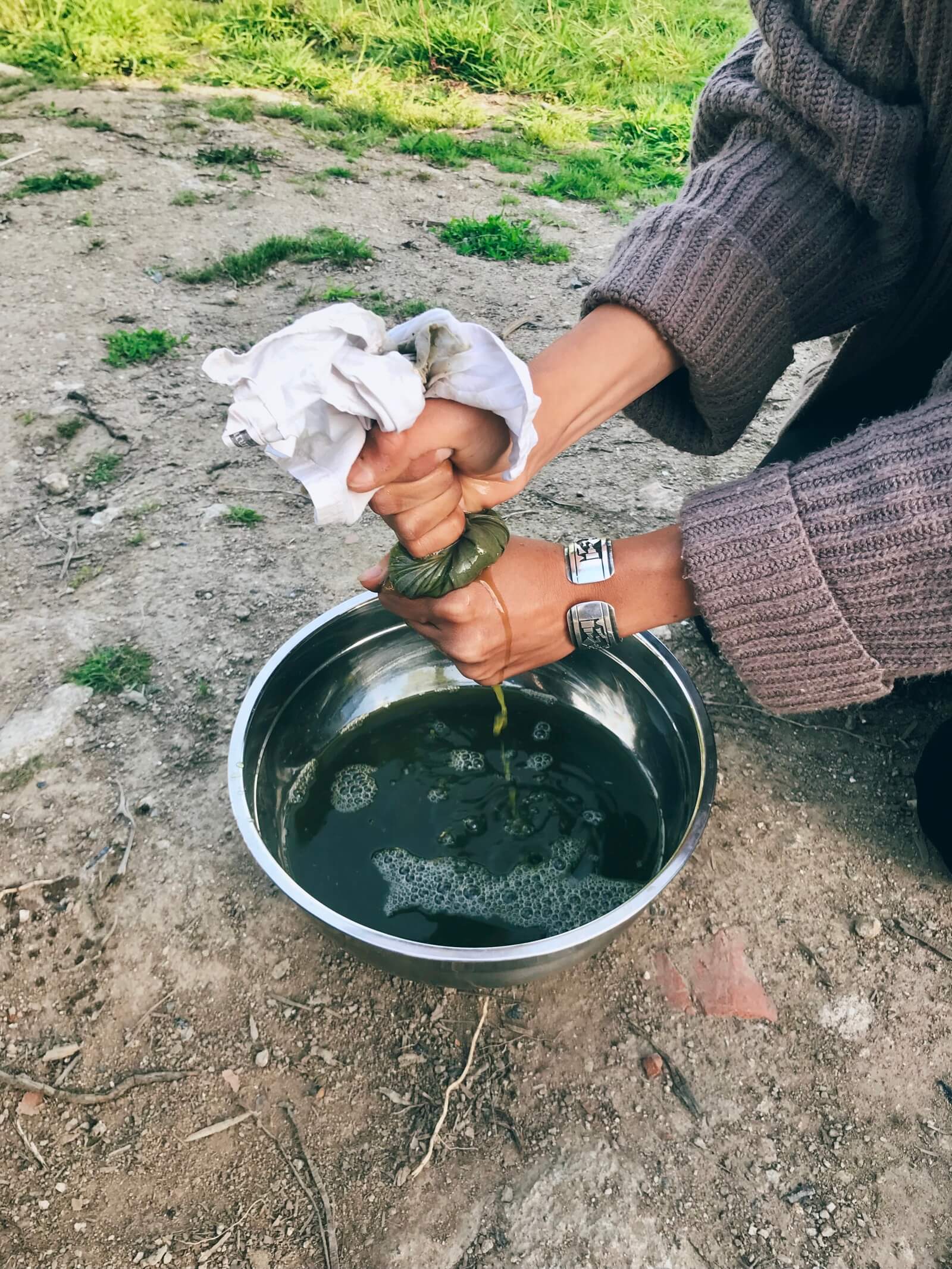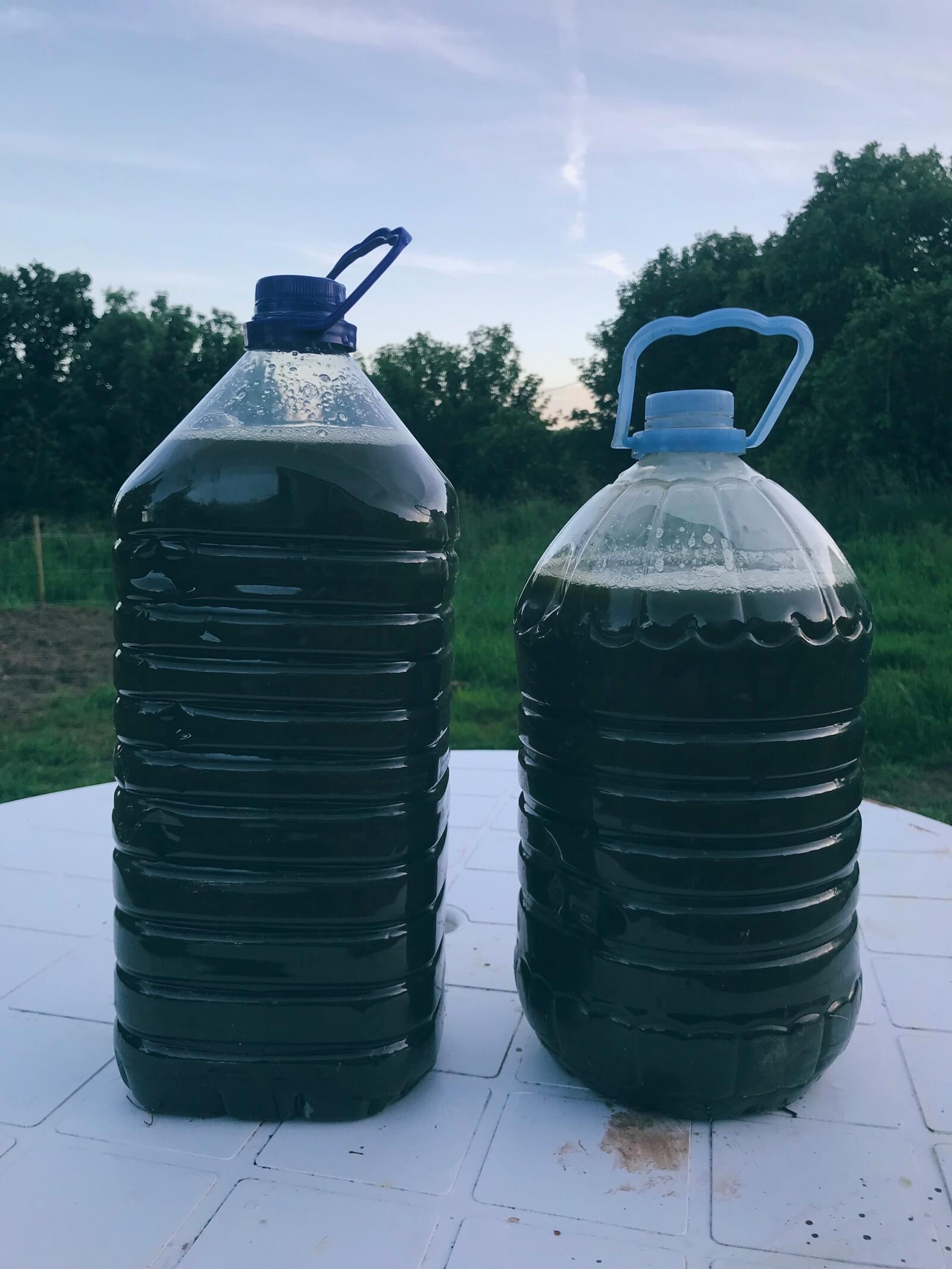
Patricia gets a lot of ideas for cool permaculture projects from El Guardian de la Tierra, a YouTube channel created by Lander, a resident of Mallorca and self-professed adicto al permacultura.
A few weeks ago, while I continued to plane and sand boards for the tool shed, she went over to the one of the abandoned yards where she saw a mass of ortiga, stinging nettle, to start preparing some homemade plant fertilizer.
The whole process takes about one-two weeks. Filtering the blanched nettle is a bit unpleasant for the smell, but now we have ten liters of concentrate, which is diluted and used on plants for fertilizer, insect repellent, and fungicide.
Deanna from Homestead and Chill wrote up her process:
Fresh stinging nettle leaves are loaded with high concentrations of vitamins A, C, D, E, F, K, P, and vitamin B-complexes, as well as large amounts of minerals including calcium, selenium, zinc, iron, magnesium and more. As a leafy green, stinging nettle is also high in nitrogen, chlorophyll, and plant polyphenols – all of which bolster plant health and stimulate growth. Plant polyphenols in particular are potent antioxidants, fight cancer, and boost the immune system.
While plants may not get arthritis or cancer in the same way humans do, plants do have an immune system – and can get sick! Therefore, the same compounds that make nettle awesome for human health provide many of the same benefits to plants. For example, plants treated with stinging nettle fertilizer are less susceptible to certain diseases due to nettles’ anti-bacterial and anti-fungal properties. Plants with a strong immune system are also less negatively impacted by pests or stress, such as drought, heat, or other unfavorable conditions.
The concentrate should be good for about sixth months.
